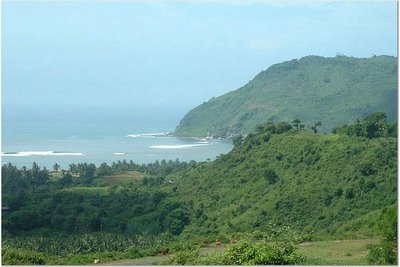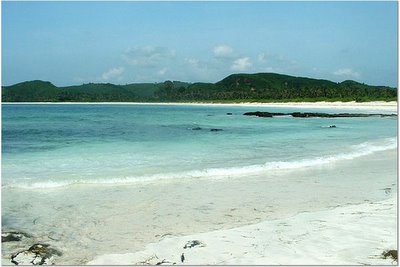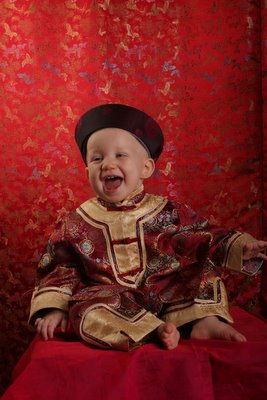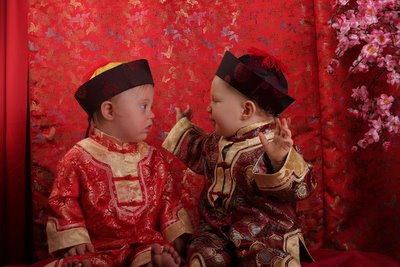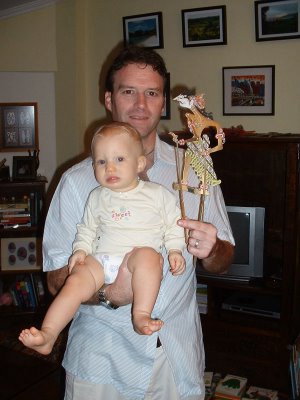The nearest most tourists ever get to Jakarta is a stopover at the airport in route to Bali. But it does have a few places tucked away here and there where the intrepid traveller or the Jakartan who simply can not stomach another trip to the mall might consider visiting. Sunda Kelapa harbour and its immediate environs is one such place. It is where the Dutch first set up shop and was a hotspot back in the days when spices of the south seas were a driving force in the burgeoning global economy. Eventually the area was abandoned by the Dutch. They moved inland to escape the disease and squalor of the low lying area. The port remained as a primary trading venue until the modern facility at TanJung Priok was built 20 kilometers away to accomodate the hulking bulks of modern day ocean going vessels. But Sunda Kelapa continues to be a vibrant port today dealing in interisland trade primarily between Jakarta, Sulawesi and Kalimantan. The centuries old traditional shipping routes are still followed and ancient methods of naviagtion practiced; the captain's deck is not equipped with modern day navigational equipment. The ships, known as bugis pinisi, are made by hand out of iron wood. Iron wood is soft when wet and thus pliable but dries into a very hard, durable wood. The schooners now use diesel engines but the sails are still in place just in case the 300 horsepower (about the size of the engines in Chevy pick up truck) engine conks out. Diesel power has cut the trip from Jakarta to Kalimantan, one of the main routes, from about a month to 3 days. The harbour is open to the public, the atmosphere is pretty laid back and it is possible to get up close and personal with the action. You can actually arrange to make the journey on a schooner through agents of the tourist department milling around the harbour. It would certainly be an interesting alternative to Bali for a long holiday weekend - sailing the south seas with the Bugis.
 Two brand new Bugis Pinisi looking very pirate shippish. There were three brand new ships docked in the harbor when we visited. They take about two years to build and cost about 200,000 $ US. The ships are made in Sulawesi then sail to Sunda Kelapa harbour where they are painted before beginning their carreers. These beauties were waiting for their cosmetic makeovers.
Two brand new Bugis Pinisi looking very pirate shippish. There were three brand new ships docked in the harbor when we visited. They take about two years to build and cost about 200,000 $ US. The ships are made in Sulawesi then sail to Sunda Kelapa harbour where they are painted before beginning their carreers. These beauties were waiting for their cosmetic makeovers. Another view of the new ships. They can sail for 50 years before they are required by law to undergo a complete overhaul.
Another view of the new ships. They can sail for 50 years before they are required by law to undergo a complete overhaul. A view of the Bugis schooners lined up waiting for loading and unloading. The primary trade is in lumber from the islands coming to Jakarta and cement, flour, cloth and other processed items going outward. The wood is of secondary quality and is used in housing construction for frames and such. The top quality timber is exported internationally. According to one of the harbour fellows we chatted with, the stacks of lumber are quite smaller than in recent years when illegal logging in Jakarta was much more prevalent. Now most likely the illegal timber trade avoids high profile places like all together and involves more clandestine distrubution facitlites.
A view of the Bugis schooners lined up waiting for loading and unloading. The primary trade is in lumber from the islands coming to Jakarta and cement, flour, cloth and other processed items going outward. The wood is of secondary quality and is used in housing construction for frames and such. The top quality timber is exported internationally. According to one of the harbour fellows we chatted with, the stacks of lumber are quite smaller than in recent years when illegal logging in Jakarta was much more prevalent. Now most likely the illegal timber trade avoids high profile places like all together and involves more clandestine distrubution facitlites. Low rider. Fully loaded with bags of cements and ready to make the return trip to Kalimantan. Cargoes of cement are a bit tricky due to the posibility of the cement taking on water and dramatically increasing in weight - not a good thing when riding that low. The long board strapped to the back right side (starboard stern??) of the ship is the rudder that is used if and when the boat is forced to rely on its sails for power.
Low rider. Fully loaded with bags of cements and ready to make the return trip to Kalimantan. Cargoes of cement are a bit tricky due to the posibility of the cement taking on water and dramatically increasing in weight - not a good thing when riding that low. The long board strapped to the back right side (starboard stern??) of the ship is the rudder that is used if and when the boat is forced to rely on its sails for power. Walking the gang plank with another low rider in the background.
Walking the gang plank with another low rider in the background. All the loading and unloading is done by hand. The labourers live in a village nearby and work 10 hour days. They earn about 15 dollars a day - bit more if unloading cement - due to the unpleasant combo of sweat and cement dust. These guys were unloading lumber.
All the loading and unloading is done by hand. The labourers live in a village nearby and work 10 hour days. They earn about 15 dollars a day - bit more if unloading cement - due to the unpleasant combo of sweat and cement dust. These guys were unloading lumber. One man's trash is another man's treasure. A local gathering driftwood floating among the flotsam.
One man's trash is another man's treasure. A local gathering driftwood floating among the flotsam. A purveyor of iced juice waits for a break in the action and potential customers from the cement crew.
A purveyor of iced juice waits for a break in the action and potential customers from the cement crew. Old school bicycle
Old school bicycle On the other side of the harbour are larger boats. The work is done by a combination of hand labor and machines.
On the other side of the harbour are larger boats. The work is done by a combination of hand labor and machines. Down in the hold of a ship, workers unload another crane full of cement bags.
Down in the hold of a ship, workers unload another crane full of cement bags. A view from the village that built up around the harbour. It is one of the oldest in Jakarta. It houses the laborers who load and unload the cargo and a community of local fisherman.
A view from the village that built up around the harbour. It is one of the oldest in Jakarta. It houses the laborers who load and unload the cargo and a community of local fisherman.
